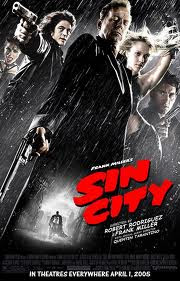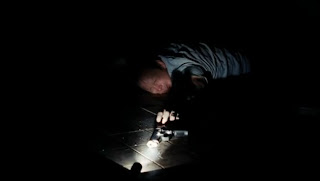
Introduction: I have chosen to analyse 'The Blair Witch Project' because our group has taken inspiration from the documentary style of filming, and are looking at shooting parts of our opening sequence in this style.
Film Overview:
'The Blair Witch Project' is a 1999 horror film, presented in the form of a documentary, with the entire film being shot using handicam. The generic conventions expected by the audience are not at all evident, as the documentary style of filming is very unique and not typical of horror films. Furthermore, in the opening 2 minutes of the film nothing 'conventional' happens, with no build of tension or anything 'scary'.
Representation & Ideology:
The main social group being represented in the opening sequence is teenagers, as the audience is introduced to 3 characters, all in their teens.
- The second social group being represented is females, as the central character is a girl, although she is actually behind camera, she is doing most the filming.
- The use of teenagers is probably down to the fact that stereotypically, teenagers are often portrayed as reckless and naive. This is
important for the storyline, as the central characters do not tell people where they are going, and are arrogant enough to search for and provoke a 'witch'. The representation of teenagers is therefore fairly negative.
- The way in which the female is represented is positive, as there is no differentiation between the males & females. However, females do often have the central role in horror films, possibly because they are seen as more innocent and vulnerable, which is often the desired effect in horror films.
Media Audiences:
- The target audience for 'The Blair Witch Project' is difficult to identify. The production team have implied that they wanted the audience to come to them, and used to internet to work out which sort of audience would watch the film.
- The fact that they used the internet as part of the promotion suggests that the target audience was a young audience, as young people prodomimantly use the internet.
- However, the mystery surrounding the film, and the fact that it was shown at the Sundance Film Festival suggests that it was also aimed at a more mature Curzon audience, who enjoy independent horror films.
- The preferred reading of the text was the make the audience believe that the footage had actually been found and was real, thus insinuating that the events of the film were also real.
- The negotiated reading of the text is likely to have been an understanding from the audience that the text is fictitious, though understanding the presentation of the text in this way makes it more believable and almost more likely to actuallty happen.
My Reading:
- My reading of the text, as a British teenager, is to identify that the text is purely fiction, but due to the age of the actors being similar to my own, I am able to relate to the events in the film which makes it more engaging.
- I also believe the text works well as it is very different from most mainstream and successful films, which adds a sense of realism and the audience can be immersed in the text because it is so realistic.
- I do not think that in this text, my reading is influenced much by my age, gender or background. Although as a teenager I may be able to identify more with the characters, and I am aware that the film is not actually a documentary.



























